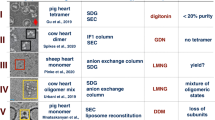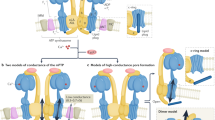Abstract
Individual cells within a population undergo apoptosis at distinct, apparently random time points. By analyzing cellular mitotic history, we identified that sibling HeLa cell pairs, in contrast to random cell pairs, underwent apoptosis synchronously. This allowed us to use high-speed cellular imaging to investigate mitochondrial outer membrane permeabilization (MOMP), a highly coordinated, rapid process during apoptosis, at a temporal resolution approximately 100 times higher than possible previously. We obtained new functional and mechanistic insight into the process of MOMP: We were able to determine the kinetics of pore formation in the outer mitochondrial membrane from the initiation phase of cytochrome-c-GFP redistribution, and showed differential pore formation kinetics in response to intrinsic or extrinsic apoptotic stimuli (staurosporine, tumor necrosis factor-related apoptosis-inducing ligand (TRAIL)). We also detected that the onset of mitochondrial permeabilization frequently proceeded as a wave through the cytosol, and that the frequency of wave occurrence in response to TRAIL was reduced by inhibition of protein kinase CK2. Computational analysis by a partial differential equation model suggested that the spread of permeabilization signals could sufficiently be explained by diffusion–adsorption velocities of locally generated permeabilization inducers. Taken together, our study yielded the first comprehensive analysis of clonal cell-to-cell variability in apoptosis execution and allowed to visualize and explain the dynamics of MOMP in cells undergoing apoptosis.
Similar content being viewed by others
Log in or create a free account to read this content
Gain free access to this article, as well as selected content from this journal and more on nature.com
or
Abbreviations
- cyt-c:
-
cytochrome-c
- FRET:
-
fluorescence resonance energy transfer
- MOMP:
-
mitochondrial outer membrane permeabilization
- PDE:
-
partial differential equation
- STS:
-
staurosporine
- TRAIL:
-
tumor necrosis factor-related apoptosis-inducing ligand
- CHX:
-
cycloheximide
- DRB:
-
5,6-dichloro-ribifuranosylbenzimidazole
- PI:
-
propidium iodide
References
Dussmann H, Rehm M, Kogel D, Prehn JH . Outer mitochondrial membrane permeabilization during apoptosis triggers caspase-independent mitochondrial and caspase-dependent plasma membrane potential depolarization: a single-cell analysis. J Cell Sci 2003; 116: 525–536.
Rehm M, Dussmann H, Prehn JH . Real-time single cell analysis of Smac/DIABLO release during apoptosis. J Cell Biol 2003; 162: 1031–1043.
Goldstein JC, Munoz-Pinedo C, Ricci JE, Adams SR, Kelekar A, Schuler M et al. Cytochrome c is released in a single step during apoptosis. Cell Death Differ 2005; 12: 453–462.
Goldstein JC, Waterhouse NJ, Juin P, Evan GI, Green DR . The coordinate release of cytochrome c during apoptosis is rapid, complete and kinetically invariant. Nat Cell Biol 2000; 2: 156–162.
Munoz-Pinedo C, Guio-Carrion A, Goldstein JC, Fitzgerald P, Newmeyer DD, Green DR . Different mitochondrial intermembrane space proteins are released during apoptosis in a manner that is coordinately initiated but can vary in duration. Proc Natl Acad Sci USA 2006; 103: 11573–11578.
Kumar S . Caspase function in programmed cell death. Cell Death Differ 2007; 14: 32–43.
Riedl SJ, Salvesen GS . The apoptosome: signalling platform of cell death. Nat Rev Mol Cell Biol 2007; 8: 405–413.
Eckelman BP, Salvesen GS, Scott FL . Human inhibitor of apoptosis proteins: why XIAP is the black sheep of the family. EMBO Rep 2006; 7: 988–994.
Rehm M, Dussmann H, Janicke RU, Tavare JM, Kogel D, Prehn JH . Single-cell fluorescence resonance energy transfer analysis demonstrates that caspase activation during apoptosis is a rapid process. Role of caspase-3. J Biol Chem 2002; 277: 24506–24514.
Rehm M, Huber HJ, Dussmann H, Prehn JH . Systems analysis of effector caspase activation and its control by X-linked inhibitor of apoptosis protein. EMBO J 2006; 25: 4338–4349.
Legewie S, Bluthgen N, Herzel H . Mathematical modeling identifies inhibitors of apoptosis as mediators of positive feedback and bistability. PLoS Comput Biol 2006; 2: e120.
Luetjens CM, Kogel D, Reimertz C, Dussmann H, Renz A, Schulze-Osthoff K et al. Multiple kinetics of mitochondrial cytochrome c release in drug-induced apoptosis. Mol Pharmacol 2001; 60: 1008–1019.
Wyllie AH, Kerr JF, Currie AR . Cell death: the significance of apoptosis. Int Rev Cytol 1980; 68: 251–306.
Messam CA, Pittman RN . Asynchrony and commitment to die during apoptosis. Exp Cell Res 1998; 238: 389–398.
Maeder CI, Hink MA, Kinkhabwala A, Mayr R, Bastiaens PI, Knop M . Spatial regulation of Fus3 MAP kinase activity through a reaction-diffusion mechanism in yeast pheromone signalling. Nat Cell Biol 2007; 9: 1319–1326.
Markevich NI, Tsyganov MA, Hoek JB, Kholodenko BN . Long-range signaling by phosphoprotein waves arising from bistability in protein kinase cascades. Mol Syst Biol 2006; 2: 61.
Pacher P, Hajnoczky G . Propagation of the apoptotic signal by mitochondrial waves. EMBO J 2001; 20: 4107–4121.
Zha J, Harada H, Yang E, Jockel J, Korsmeyer SJ . Serine phosphorylation of death agonist BAD in response to survival factor results in binding to 14-3-3 not BCL-X(L). Cell 1996; 87: 619–628.
Akhtar RS, Geng Y, Klocke BJ, Latham CB, Villunger A, Michalak EM et al. BH3-only proapoptotic Bcl-2 family members Noxa and Puma mediate neural precursor cell death. J Neurosci 2006; 26: 7257–7264.
Falschlehner C, Emmerich CH, Gerlach B, Walczak H . TRAIL signalling: decisions between life and death. Int J Biochem Cell Biol 2007; 39: 1462–1475.
Yamada H, Tada-Oikawa S, Uchida A, Kawanishi S . TRAIL causes cleavage of bid by caspase-8 and loss of mitochondrial membrane potential resulting in apoptosis in BJAB cells. Biochem Biophys Res Commun 1999; 265: 130–133.
Hulser DF, Webb DJ . Relation between ionic coupling and morphology of established cells in culture. Exp Cell Res 1973; 80: 210–222.
Kumei Y, Nakajima T, Sato A, Kamata N, Enomoto S . Reduction of G1 phase duration and enhancement of c-myc gene expression in HeLa cells at hypergravity. J Cell Sci 1989; 93 (Part 2): 221–226.
Dumitru CA, Gulbins E . TRAIL activates acid sphingomyelinase via a redox mechanism and releases ceramide to trigger apoptosis. Oncogene 2006; 25: 5612–5625.
Degli Esposti M, Ferry G, Masdehors P, Boutin JA, Hickman JA, Dive C . Post-translational modification of Bid has differential effects on its susceptibility to cleavage by caspase 8 or caspase 3. J Biol Chem 2003; 278: 15749–15757.
Desagher S, Osen-Sand A, Montessuit S, Magnenat E, Vilbois F, Hochmann A et al. Phosphorylation of bid by casein kinases I and II regulates its cleavage by caspase 8. Mol Cell 2001; 8: 601–611.
Sarno S, Reddy H, Meggio F, Ruzzene M, Davies SP, Donella-Deana A et al. Selectivity of 4,5,6,7-tetrabromobenzotriazole, an ATP site-directed inhibitor of protein kinase CK2 (‘casein kinase-2’). FEBS Lett 2001; 496: 44–48.
Ravi R, Bedi A . Sensitization of tumor cells to Apo2 ligand/TRAIL-induced apoptosis by inhibition of casein kinase II. Cancer Res 2002; 62: 4180–4185.
Litchfield DW . Protein kinase CK2: structure, regulation and role in cellular decisions of life and death. Biochem J 2003; 369: 1–15.
Ward MW, Rehm M, Duessmann H, Kacmar S, Concannon CG, Prehn JH . Real time single cell analysis of Bid cleavage and Bid translocation during caspase-dependent and neuronal caspase-independent apoptosis. J Biol Chem 2006; 281: 5837–5844.
Fick A . Über diffusion. Poggendorff's Annalen der Physik und Chemie 1855; 94: 59–86.
Luo X, Budihardjo I, Zou H, Slaughter C, Wang X . Bid, a Bcl2 interacting protein, mediates cytochrome c release from mitochondria in response to activation of cell surface death receptors. Cell 1998; 94: 481–490.
Farlow SJ . Partial Differential Equations for Engineers and Scientists. John Wiley and Sons: New York, 1993.
Sigal A, Milo R, Cohen A, Geva-Zatorsky N, Klein Y, Liron Y et al. Variability and memory of protein levels in human cells. Nature 2006; 444: 643–646.
Cooper S . Rethinking synchronization of mammalian cells for cell cycle analysis. Cell Mol Life Sci 2003; 60: 1099–1106.
Bentele M, Lavrik I, Ulrich M, Stosser S, Heermann DW, Kalthoff H et al. Mathematical modeling reveals threshold mechanism in CD95-induced apoptosis. J Cell Biol 2004; 166: 839–851.
Eissing T, Conzelmann H, Gilles ED, Allgower F, Bullinger E, Scheurich P . Bistability analyses of a caspase activation model for receptor-induced apoptosis. J Biol Chem 2004; 279: 36892–36897.
Fussenegger M, Bailey JE, Varner J . A mathematical model of caspase function in apoptosis. Nat Biotechnol 2000; 18: 768–774.
Albeck JG, Burke JM, Aldridge BB, Zhang M, Lauffenburger DA, Sorger PK . Quantitative analysis of pathways controlling extrinsic apoptosis in single cells. Mol Cell 2008; 30: 11–25.
Huber H, Gomez Estrada G, Dussmann H, O’Connor C, Rehm M . Extending the explanatory power of live cell imaging by computationally modelling the execution of apoptotic cell death. In: Mendez-Vilas A, Diaz J (eds). Formatex Microscopy Book Series: Vol. 1: Badajoz, 2007, pp. 88–99.
Hellwig CT, Kohler BF, Lehtivarjo AK, Dussmann H, Courtney MJ, Prehn JH et al. Real-time analysis of TRAIL/CHX-induced caspase activities during apoptosis initiation. J Biol Chem 2008; 283: 21676–21685.
Kuwana T, Bouchier-Hayes L, Chipuk JE, Bonzon C, Sullivan BA, Green DR et al. BH3 domains of BH3-only proteins differentially regulate Bax-mediated mitochondrial membrane permeabilization both directly and indirectly. Mol Cell 2005; 17: 525–535.
Letai A, Bassik MC, Walensky LD, Sorcinelli MD, Weiler S, Korsmeyer SJ . Distinct BH3 domains either sensitize or activate mitochondrial apoptosis, serving as prototype cancer therapeutics. Cancer Cell 2002; 2: 183–192.
Kohler B, Anguissola S, Concannon CG, Rehm M, Kogel D, Prehn JH . Bid participates in genotoxic drug-induced apoptosis of HeLa cells and is essential for death receptor ligands’ apoptotic and synergistic effects. PLoS ONE 2008; 3: e2844.
Acknowledgements
We thank Aidan Spring for technical support. This research was supported by grants from Science Foundation Ireland (03/RP1/B344; 05/RFP/BIM056), the Health Research Board Ireland (RP/2006/258), the National Biophotonics and Imaging Platform (HEA PRTLI Cycle 4), as well as by SIEMENS Ireland and the EU Framework Programme 7 (APO-SYS).
Author information
Authors and Affiliations
Corresponding authors
Additional information
Edited by D Vaux
Supplementary Information accompanies the paper on Cell Death and Differentiation website (http://www.nature.com/cdd)
Rights and permissions
About this article
Cite this article
Rehm, M., Huber, H., Hellwig, C. et al. Dynamics of outer mitochondrial membrane permeabilization during apoptosis. Cell Death Differ 16, 613–623 (2009). https://doi.org/10.1038/cdd.2008.187
Received:
Revised:
Accepted:
Published:
Issue date:
DOI: https://doi.org/10.1038/cdd.2008.187
Keywords
This article is cited by
-
BAX activation in mouse retinal ganglion cells occurs in two temporally and mechanistically distinct steps
Molecular Neurodegeneration (2023)
-
hUCMSCs reduce theca interstitial cells apoptosis and restore ovarian function in premature ovarian insufficiency rats through regulating NR4A1-mediated mitochondrial mechanisms
Reproductive Biology and Endocrinology (2022)
-
An atlas of inter- and intra-tumor heterogeneity of apoptosis competency in colorectal cancer tissue at single-cell resolution
Cell Death & Differentiation (2022)
-
Characteristics of intracellular propagation of mitochondrial BAX recruitment during apoptosis
Apoptosis (2021)
-
Stoichiometry and regulation network of Bcl-2 family complexes quantified by live-cell FRET assay
Cellular and Molecular Life Sciences (2020)



